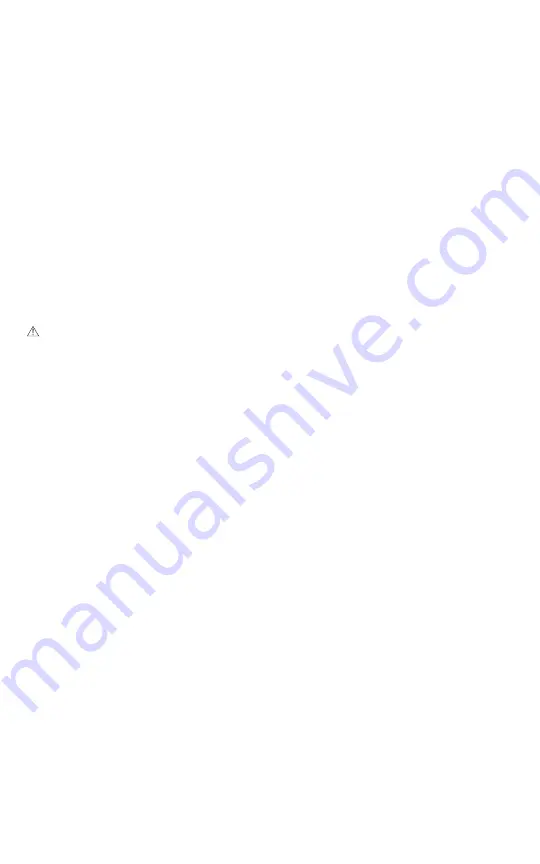
3
8. Leaving the drain implanted for any period of time so as to cause tissue ingrowth
around the drain can interfere with easy removal and may affect the performance of the
drain. The surgeon should monitor the patient’s rate of wound healing.
9. Drain perforations must lie within the wound or cavity to be drained, otherwise
inadequate drainage may result.
10 To avoid the possibility of drain damage or breakage, please follow these steps:
a. Avoid suturing through drains.
b. Drains should lie flat and in line with the skin exit areas.
c. Particular care should be taken to avoid any obstacles to the drain exit path.
d. Drains should be checked for free motion during closure to minimize the possibility
of breakage.
e. Drain removal should be done gently by hand. Drains should not be handled with
pointed, toothed or sharp instruments as these could cause cuts or nicks and lead
to subsequent structural failure of the drain.
f. Surgical removal may be necessary if drain is difficult to remove or breaks.
11. This is a single use device. DO NOT reuse.
12. DO NOT re-sterilize.
13. Trocar and evacuator are MR unsafe.
Note:
When using Trocar with drain, care should be taken as the sharp and pointed edge of
Trocar could result in serious injury. After removal of Trocar from the drain, please dispose
of it as per the Hospital protocol in the appropriate biohazard/sharps container.
0043600, 0043610, 0043620, 0043630:
WARNING:
This product can expose you to di(2-ethylhexyl) phthalate (DEHP), which
is known to the State of California to cause cancer and birth defects or other reproductive
harm. For more information, go to: https://www.P65Warnings.ca.gov.
VI. Complications:
1. This is a single use device. Do not re-sterilize any portion of this device. Reuse and/
or repackaging may create a risk of patient or user infection, compromise the structural
integrity and/or essential material and design characteristics of the device, which may
lead to device failure, and/or lead to injury, illness or death of the patient.
2. Severe allergic reactions or illness may result in patients who are allergic to materials
used in
B
arD
®
Drain Products.
3. If the evacuator is not emptied when full, drainage from the wound site will cease and
the likelihood of back-contamination across the anti-reflux valve is increased.
4. In the event an air-tight seal is not achieved, the evacuator will rapidly fill with air from
the leak; subsequent drainage to the evacuator will occur only if allowed by gravity
and wound exudates forcing the flow. Entry into the evacuator is allowed only by
displacement of air in the evacuator by wound exudates flow. In this displacement
process, air reflux from the evacuator to the wound can occur and increase the
likelihood of back-contamination across the anti-reflux valve. In the event of drain
occlusion by fibrin, clots, or other particulate matter, all wound drainage ceases.
5. The advantages of wound drainage, particularly closed system drainage, are lost if an
air-tight seal between the drain and the skin where the drain emerges is not achieved or
if the drain is allowed to become occluded.
6. Complications which may result from the use of this suction drainage system include
the risks associated with methods utilized in the surgical procedure, as well as the
patient degree of intolerance to any foreign object in the body.
VII. Instructions for Use:
1. The surgeon should irrigate the wound with sterile fluid and then suction the irrigating
fluid and gross debris from the operative site.
2. Tubes should lie flat and in line with the anticipated skin exit. To facilitate later removal
by manual traction, the tubing should not be curled, pinched, or sutured internally.
3. Positioning of the drain in the body cavity, as well as the number of drains indicated,
should be determined by the surgeon.
4. Drain tubing should be placed within the wound by approximating the areas of critical
fluid collection.
5. Care must be taken to ensure that all drain perforations or channels lie completely
within the wound or cavity to be drained.
6. Taping or a triple loop suture (around and NOT through the tubing) will aid in preventing
Summary of Contents for Davol CWS 400
Page 32: ...32 5 6 VII 1 2 3 4 5 6 7 8 9 9 i 9 ii 9 i 9 iii 10 11 12 13 Y 14...
Page 66: ...66 CWS 400 I Davol 400 CWS 400 II III IV 1 2 3 4 5 6 7 8 Y Y Y 9 2 V 1 2 3 Bard 4 5 Russian...
Page 68: ...68 5 6 VII 1 2 3 4 5 6 7 8 9 9 2 54 Y 9 9 1 9 Y 10 Y 11 Y A 12 B 13 Y B 14 B Y...
Page 78: ...78...
Page 79: ...79...
Page 80: ...80...




































